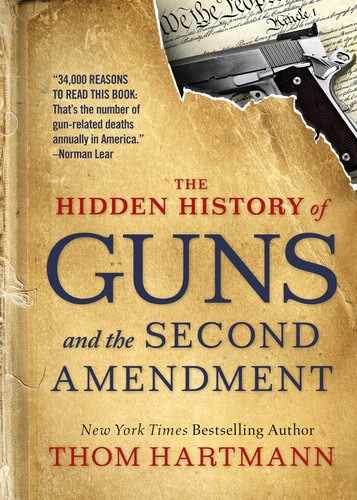CHAPTER 3
The Roots of American Gun Culture in the “Discovery” of America
The immediate objects are the total destruction and devastation of their settlements and the capture of as many prisoners of every age and sex as possible. It will be essential to ruin their crops now in the ground and prevent their planting more.
-Orders of George Washington to Major General John Sullivan, May 31, 17791
Without America’s history of slavery and Native American genocide, today’s “American gun culture” wouldn’t exist. The fact that America is today soaked in gun-splattered blood should be no surprise; this nation’s story is one of the most genocidal in the modern history of the world.
How bad was it?
In 1992, historian David Stannard set out to determine how many Native Americans were killed, both directly at the barrel of a gun and indirectly by disease and loss of land/food, by European invaders to the Americas.2 His best estimate puts Hitler to shame: white people killed more than 100 million Native Americans between 1492 and today . . . and the killing continues, in subtler ways than previous generations could have imagined.
One gray, rainy winter day in 2016, Louise and I made our way through the Smithsonian’s National Museum of the American Indian. The gift shop sells a map of North America, circa 1491—the year before Columbus blundered onto our shores. On the map, in meticulous detail, are identified the names and lands of the hundreds of native tribes that filled our continent.
There was virtually no empty space at all, except in places like the desert Southwest, but even in the most uninhabitable places there were still people, albeit with population densities as low as a few dozen people per square mile.
Haiti is a great (or terrible) example of what happened when Europeans invaded the Americas and kicked off an orgy of killing of natives, in this case in the Caribbean, by white invaders—a blood frenzy that lasted several centuries, as I described in my book The Last Hours of Ancient Sunlight.3
When Columbus first landed on Hispaniola (the Caribbean island comprising modern-day Haiti and the Dominican Republic) in 1492, almost the entire island was covered by lush forest. The Taino “Indians” who lived there had an idyllic life prior to Columbus, according to the reports left to us by literate members of Columbus’s crew, such as Miguel Cuneo.
It’s unclear exactly how well armed Columbus and his crew were when they set out to find a sea route to India. In a 2013 NPR article titled “The First Gun in America,” reporter Linton Weeks spoke with Jim Supica, director of the N^A National Firearms Museum in Virginia. Supica told Weeks that for tax purposes, Spanish explorations only listed the cannons aboard a vessel, not personal firearms.4
In the same NPR article, underwater archaeologist Donald Keith explained that Columbus’s crew had a designated “artilleryman,” and in at least one instance, Columbus fired his cannons to strike fear into the hearts of the Taino.
Keith told NPR that “when [Columbus] sailed away from Haiti he ordered a shot to be fired through the shipwrecked hulk of the Santa Maria to impress on the Native Americans the power of European firearms. The weapon he used would have been a breech-loading wrought-iron cannon. If he had such a weapon he would also have had smaller shoulder arms, such as arquebuses.”
Christopher Columbus was armed not only to find gold, but also to dominate and enslave anyone who stood between him and his pursuit of riches.
